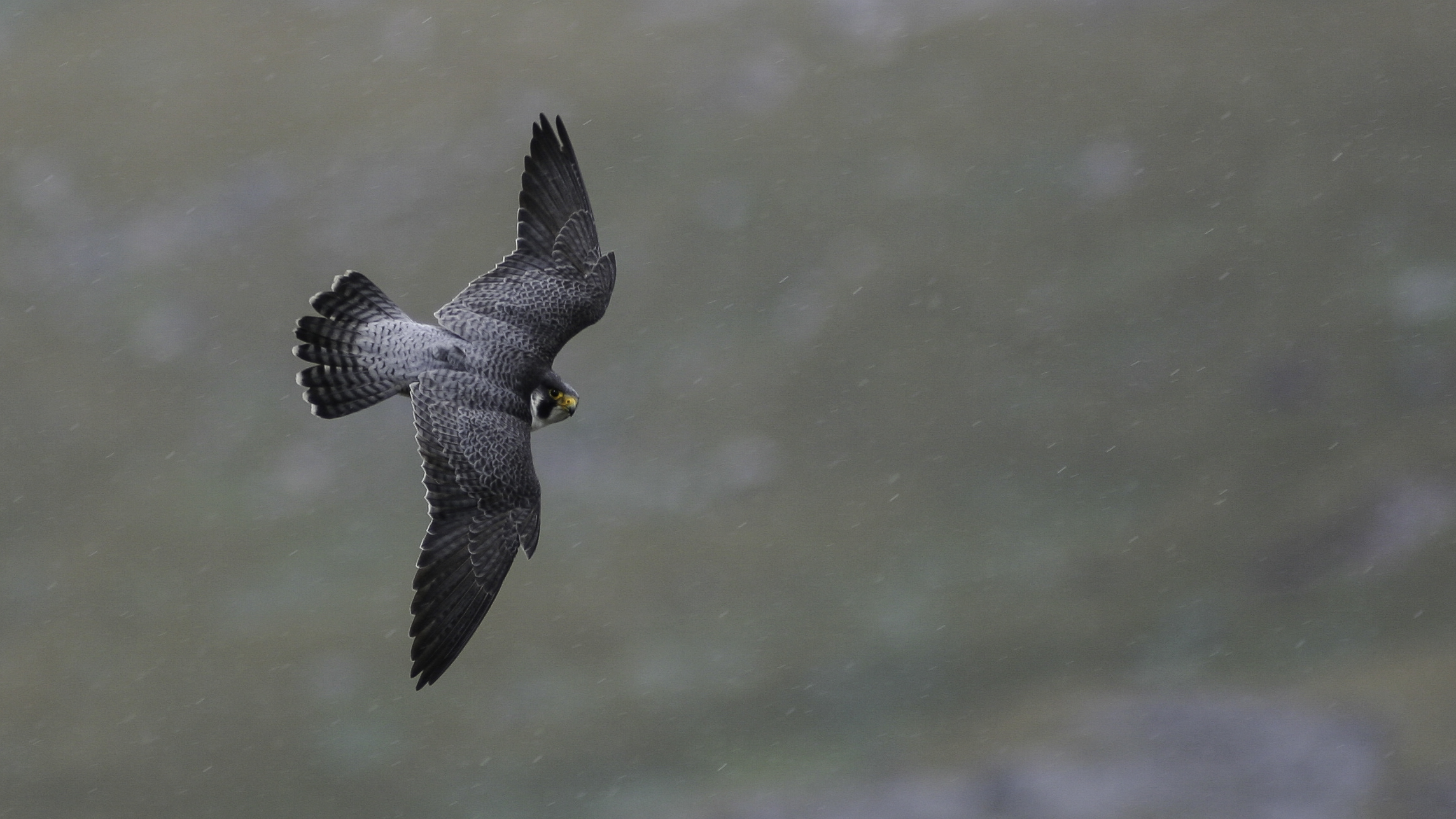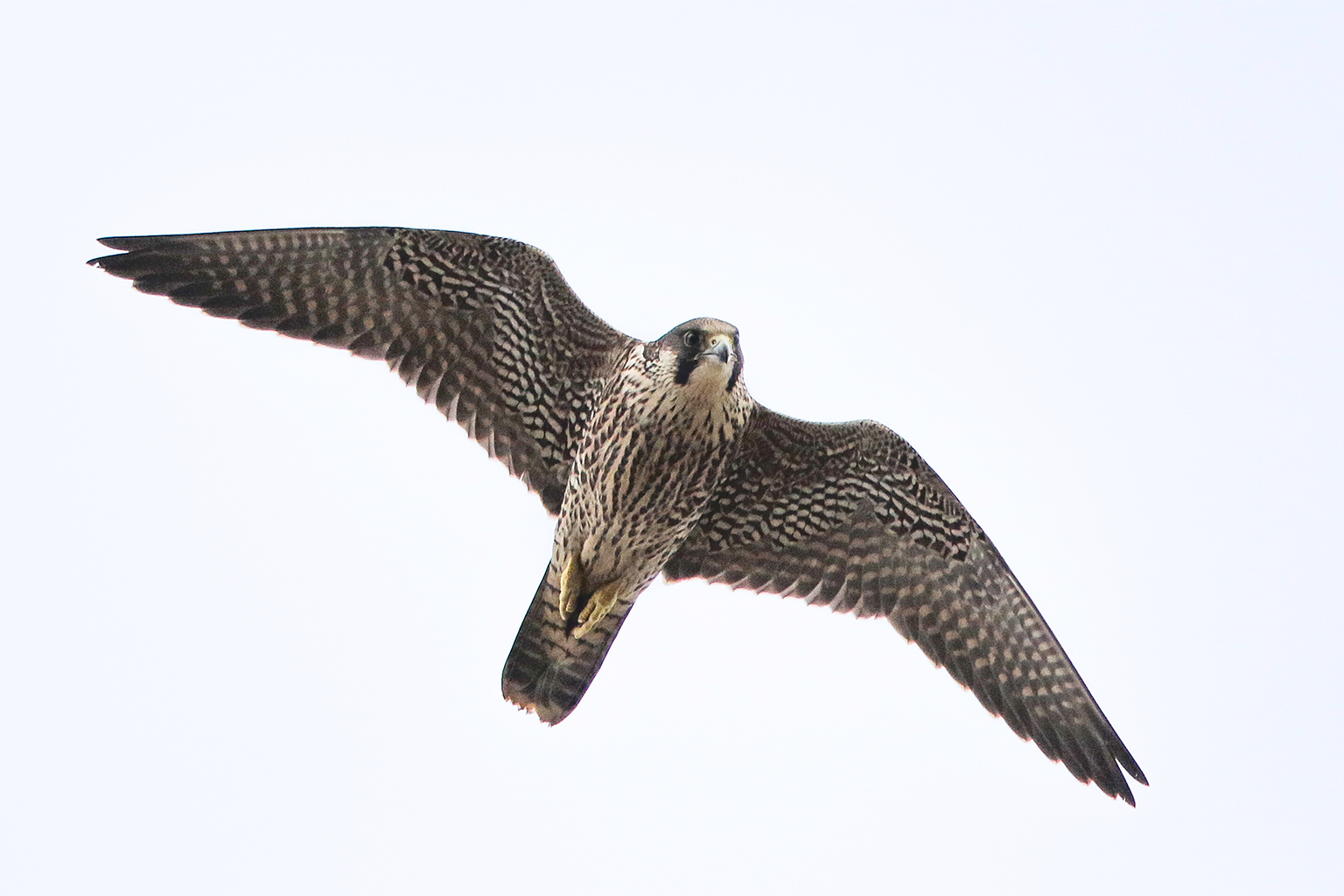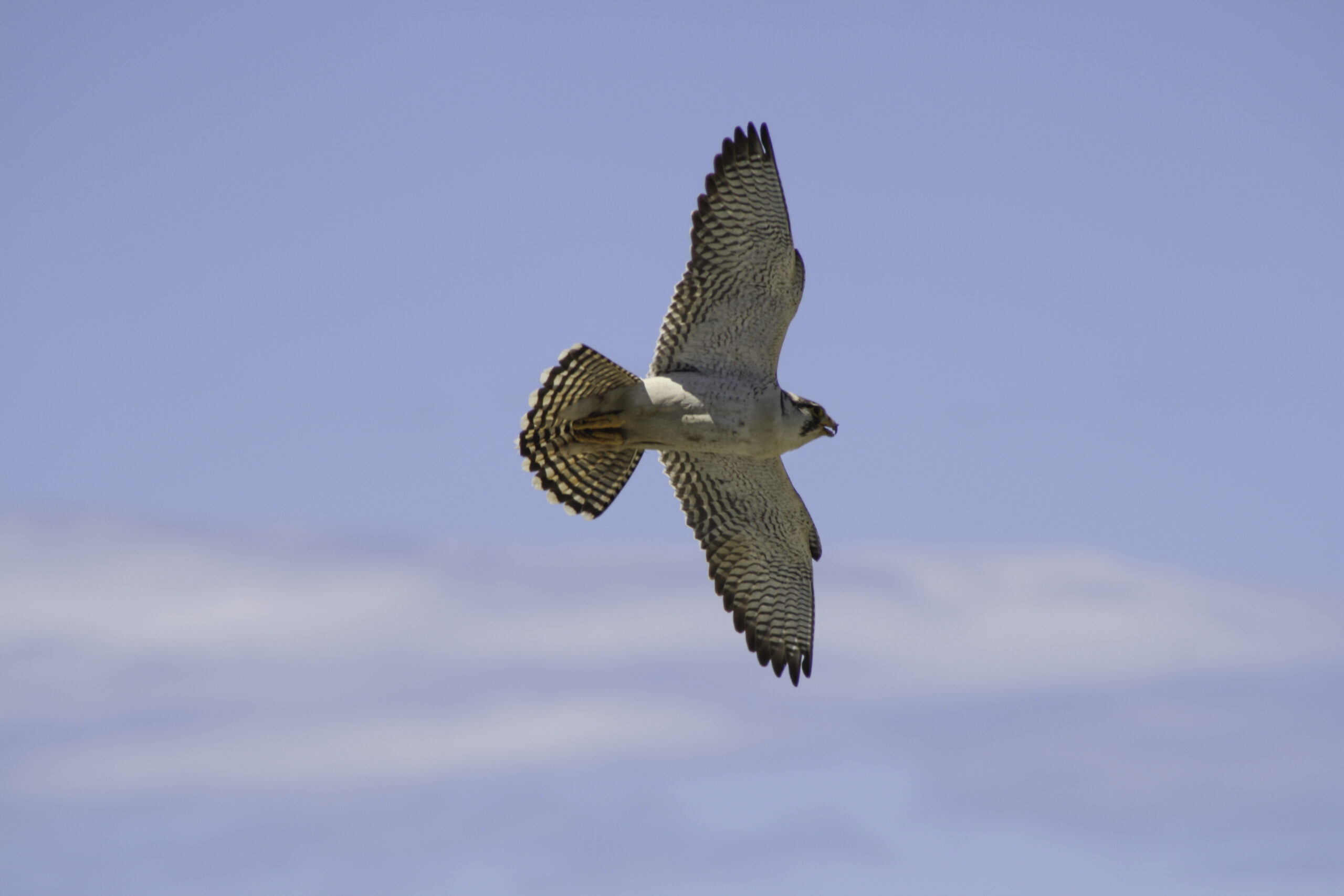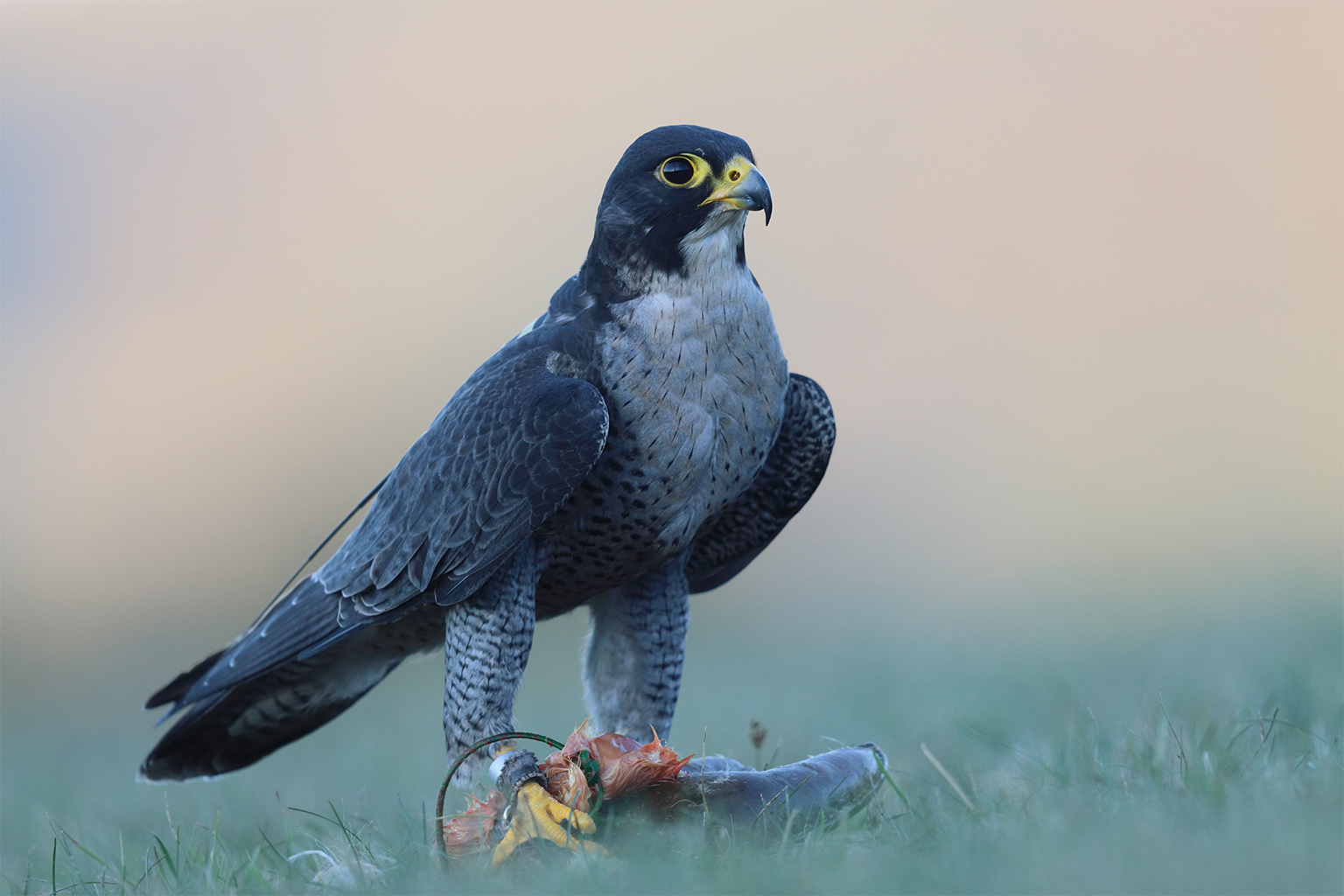Peregrine falcons, the world’s fastest and most widespread raptors, recovered spectacularly after pesticides that nearly drove them to extinction were banned and captive-bred birds were rewilded, making the effort a remarkable conservation success story.Although the species is no longer endangered, international commercial trade in this bird, coveted by falconers, is banned for wild-caught specimens and highly regulated for captive-bred ones. Canada and the U.S. propose loosening those restrictions, a proposal that will be voted on at the upcoming meeting of CITES, the global wildlife trade treaty.Some raptor scientists have concerns. The Caanada-U.S. downlisting proposal includes population estimates of just a few subspecies; many others are understudied. Some populations have declined in recent years and illegal trade continues.Until there are safeguards against unsustainable trade and accurate assessments for all subspecies, conservationists say lowering protections could undo the efforts that have brought this bird back from the brink.
See All Key Ideas
The crow-sized, slate-blue-backed peregrine falcon, with its bright yellow feet, soars across the skies from Greenland’s Arctic tundra to the steppe plains of Patagonia in South America. Falco peregrinus is one of the most widespread birds on the planet, with 19 subspecies that call coasts, mountains, deserts and river valleys home.
These eye-catching raptors are best known for their hunting skills. They can dive at lightning speeds of 320 kilometers per hour (200 miles per hour) — more than three times as fast as a cheetah, the swiftest land animal — to scoop their prey. Falconers prize peregrine falcons and have traded them for centuries, sometimes stealing eggs and young chicks from clifftop nests to breed them in captivity and train them.
But it wasn’t falconry, an ancient sport where raptors are trained to hunt specific prey, that caused their near-extinction. It was pesticides: After World War II, chemicals like DDT, aldrin and others became ubiquitous, used in neighborhoods, backyards and on crop fields to kill mosquitoes and agricultural pests.
That proved deadly to peregrine falcons. The pesticides poisoned their prey and bioaccumulated in their bodies, impairing their ability to reproduce. The eggs that females were thinner and more fragile, leached of calcium by DDT, and would break in the nests before the chicks could hatch.
Peregrine falcon populations crashed across North America and Europe. They completely disappeared from the eastern U.S. and were on the brink of extinction in the West. Then, in 1962, U.S. biologist Rachel Carson published Silent Spring, chronicling the hazards of pesticides on animals, especially birds of prey.
 An adult male Arctic peregrine (F. p. tundrius) in Greenland, where the population seems to be thriving, but scientists are concerned that this migratory bird may be “double counted” in different locations. Image by Knud Falk.
An adult male Arctic peregrine (F. p. tundrius) in Greenland, where the population seems to be thriving, but scientists are concerned that this migratory bird may be “double counted” in different locations. Image by Knud Falk.
Conservation efforts soon kicked in: Peregrine falcons were added to the U.S. Endangered Species List in 1970. Canada banned DDT the same year, and the U.S. followed suit in 1972. Three years later, international commercial trade of wild peregrine falcons was banned under CITES, a treaty regulating the international wildlife trade.
In the following decades, falconers and conservation organizations bred the birds in captivity and released them into the wild. Their numbers bounced back, and peregrine falcons became one of the world’s greatest conservation success stories.
Today, its status is listed as “least concern” on the IUCN Red List. Peregrine populations across Europe and North America are believed to be thriving, but questions remain about understudied subspecies in Africa, Southeast Asia and South America.
Now, Canada and the U.S. have submitted a joint proposal to lift the current ban on international commercial trade of wild peregrine falcons. The proposal will be voted on by 184 member countries and the European Union at the upcoming CITES Conference of the Parties (CoP) meeting in late November in Uzbekistan. A previous proposal to reduce trade protections was overwhelmingly rejected in 2016.
Peregrines are currently listed in CITES Appendix I, which offers full protection from commercial trade for wild-caught birds. Captive-bred birds can be traded commercially, but under strict CITES oversight. The Canada-U.S. proposal calls for downlisting them to Appendix II, which would loosen these restrictions, and calls the change “low risk” and noting that it demonstrates the “success of CITES for a species with a healthy population.”
The birds used in falconry, the proposal says, are mostly captive-bred, so demand for wild birds would remain low with little impact on the wild. It also states that lowering protections will limit the onerous administrative burden and paperwork needed to trade an Appendix I species, and countries can instead dedicate resources to “achieve a greater conservation impact.”
 Peregrine falcons breed in open landscapes and nest on cliffs. In cities, they may nest on transmission towers, quarries, silos, skyscrapers, churches and bridges, sometimes occupying nests abandoned by other birds. Image by Knud Falk.
Peregrine falcons breed in open landscapes and nest on cliffs. In cities, they may nest on transmission towers, quarries, silos, skyscrapers, churches and bridges, sometimes occupying nests abandoned by other birds. Image by Knud Falk.
Proposal concerns scientists
The proposal has raised concern among some scientists, who have launched a petition to oppose it. They’ve also submitted a letter outlining the issues with the proposal, which has been accepted for publication in the journal Animal Conservation.
One of the authors of that letter is Knud Falk, an independent raptor researcher based in Sweden who began studying peregrine falcons five decades ago when their numbers were on the brink. “My gray hair indicates that I’ve been around while the falcons were really almost extinct in much of Europe and much of North America,” he quipped. He’s seen their remarkable recovery since.
The proposal’s population estimates are one of their concerns. Of the world’s 19 peregrine subspecies, the IUCN Red List assessment focuses only on well-studied ones in North America, Europe, Greenland and the Mediterranean. That’s only eight subspecies, Falk said. “It’s a very [Global] North-centric view.”
Counting methods are also in question. Scientists allege that some are double-counted. Because these migratory birds move between the Arctic and Europe or North America, they may be tallied in both regions.
Scientists say some island-dwelling subspecies are in danger of disappearing forever, such as the Cape Verde peregrine falcon (F. p. madens) off Africa’s Atlantic coast, and the Malagasy peregrine falcon (F. p. radama) in Madagascar.
There’s patchy data on South American peregrine falcons (F. p. cassini) on the continent’s west coast, Ernest’s peregrine falcons (F. p. ernesti) in Southeast Asia and other African and Russian subspecies.
“We know next to nothing about the majority of the populations in the Global South, where there is also poor law enforcement and it’s much easier to actually trap them,” Falk said. These populations, he said, will be the most vulnerable to the wildlife trade if the species is downlisted.
Overall, many peregrine subspecies have declined in recent years, so scientists are concerned that assessments aren’t up to date. Migrating falcon numbers plummeted by about half since 2020 in Falsterbo, Sweden, compared with the previous decade. Breeding adults in Sweden also decreased by 40% in 2024 compared to peaks four years ago, according to BirdLife International, a conservation organization, Falk said.
 Immature birds, like this female (F.p. peregrinus) in Sweden, are rarely able to gain a territory in the wild because a surplus of adults are usually ready to fill any vacancies. However, in recent years, scientists have witnessed a rapid increase in the number of immatures (usually females) gaining territories in Scotland and Sweden, indicating many adults have been lost, most likely due to avian influenza. Image by Peter Grahn.
Immature birds, like this female (F.p. peregrinus) in Sweden, are rarely able to gain a territory in the wild because a surplus of adults are usually ready to fill any vacancies. However, in recent years, scientists have witnessed a rapid increase in the number of immatures (usually females) gaining territories in Scotland and Sweden, indicating many adults have been lost, most likely due to avian influenza. Image by Peter Grahn.
North American trends are also concerning. During the Christmas Bird Count — an annual birding event organized by the Audubon Society, a bird conservation NGO — observations of peregrines dropped by nearly half over the last three years in British Columbia, Canada and in the U.S. state of Washington. Along Alaska’s Yukon River, falcon numbers nosedived from about 60 breeding pairs in 2019 to just 33 in 2023. Scientists have seen similar declines in other parts of North America.
“These kinds of data indicate that there’s something wrong in the northern populations,” Falk said. While scientists don’t yet know the cause, he suggested that H5N1, a deadly strain of bird flu, could be a factor.
While the proposal currently before CITES acknowledges the threat from avian flu, it says every country must make its own determination about whether trade could hurt wild populations. Since many countries quarantine live imports and diseased birds die quickly, the proposal argues that trade doesn’t spread the disease — an assessment Falk agrees with.
Although avian flu will not eradicate peregrine falcons, Falk said, it will cause what he describes as a “heavy dip” in numbers before they can acquire immunity against the virus. “We don’t know whether it will be two years or five years or 10 years [before that happens].” And then there’s the possibility that the virus will continue to mutate, evading immunity and infecting the birds.
In its recently published recommendations on CITES proposals to be voted on, U.S.-based nonprofit Wildlife Conservation Society (WCS) says bird flu-driven declines in peregrine falcons across the globe present a “significant risk” to wild birds. It urges the U.S. and Canada to amend the proposal with a provision for “zero quota on international trade in wild-caught individuals.”
Falk countered the proposal’s argument on easing administrative burdens. While he acknowledged that it reduces paperwork — captive-breeding facilities must register with CITES if they want to sell their birds abroad — he argued that it forces countries to be more vigilant in the field about falcons in trade. “They need to make sure that birds that are now traded are not caught from the wild,” he said, adding that this could be a tall task for resource-strapped countries.
With this proposal, Falk said, Canada and the U.S. are “shifting the admin burden” to poorer countries, where most of the rare subspecies are found. “It’s collateral damage that they didn’t think of when they made the proposal.”
 The “pallid“ morph of the South American peregrine subspecies (Falco peregrinus cassini) is in high demand on the market. Image by Miguel Saggese.
The “pallid“ morph of the South American peregrine subspecies (Falco peregrinus cassini) is in high demand on the market. Image by Miguel Saggese.
Illegal trade in peregrine falcon continues
Under CITES Appendix I, the commercial trade ban on peregrine falcons applies only to wild-caught birds. A substantial number of captive-bred birds are sold internationally to falconers and breeders, and a smaller number of wild birds are exported under noncommercial designations.
In all cases, the trades must be registered with CITES. Over the past decade, an average of 1,551 live birds were exported annually from 51 countries, according to the CITES database; more than 80% were purportedly captive bred. The Canada-U.S. proposal points to this to make the case that demand for wild birds will remain small should the species be downlisted to Appendix II, since most birds used in falconry come from “a well-established captive-bred industry.” It does, however, note that it’s “difficult to assess” clandestine trade.
Yet even Canada considers falconry a threat to the birds, and has banned the capture of wild peregrine falcons nationwide, except in the province of Saskatchewan. In the U.S., falconers need a permit to take peregrines from the wild. Wild birds, falconers claim, improve the captive-breeding gene pool. They also say that interbreeding different subspecies creates hybrids that are superior hunters.
Illegal trapping and trade of peregrines is rampant in conflict-prone parts of the Middle East, where hunting with birds of prey is an ancient Bedouin cultural tradition dating back to around 3500 B.C.E. Falcon racing has also become an increasingly popular sport.
There’s a very different threat in Egypt and Lebanon, where falcons and other migratory birds are targets for sport hunters or are shot for “social media trophies,” with hunters illegally shooting hundreds of birds and posting their kills on social media to brag — or for sport. In Pakistan, selling illegally caught birds to wealthy Arabs is big business.
 A hybrid peregrine falcon (Falco peregrinus peregrinus x cassini) bred in captivity for falconry. Although captive bred falcons are legal to own and trade, one of the parents of this bird had been illegally imported from South America. Image by Iñigo Zuberogoitia.
A hybrid peregrine falcon (Falco peregrinus peregrinus x cassini) bred in captivity for falconry. Although captive bred falcons are legal to own and trade, one of the parents of this bird had been illegally imported from South America. Image by Iñigo Zuberogoitia.
Poachers also steal eggs and young birds from nests, then pass them off as captive-bred with falsified permits. Loosening trade restrictions will further exacerbate this problem, conservationists say, because laundering becomes easier with less scrutiny.
It also poses a risk to other similar-looking species, such as gyrfalcons (Falco rusticolus) and laggar falcons (Falco jugger) that are also Appendix I-listed species. As juveniles, they look similar to peregrines and law enforcement officials can’t easily distinguish them, adding to enforcement challenges, Falk said.
Experts also cite the inability to meet “the precautionary measure” that CITES requires for downlisting: There’s continuing demand from falconers and limited enforcement in place to protect the birds in some range countries. In resource-strapped nations where law enforcement is underfunded, regulating trade is a challenge, Falk said.
A coalition of 34 conservation nonprofits helped defeat a previous downlisting proposal for peregrines in 2016. The group cited similar concerns to those leveled against this one: incomplete and unreliable assessments and ongoing illegal trade.
One of those signatories, the Germany-based nonprofit Committee Against Bird Slaughter, says its position on downlisting hasn’t changed a decade later, according to press officer Axel Hershfield, who also serves on the organization’s board. Accurate data on the scale of trade and trafficking in the Middle East is nonexistent, he said, but these birds are still threatened by illegal shooting, nest raiding and trapping.
“Downlisting peregrines would only help poachers and traffickers to minimize their risks,” Hershfield said.
Before loosening the trade in peregrine falcons, raptor scientists call for more research on poorly known subspecies. They also recommend understanding how recent declines due to bird flu and the ongoing illegal trade are affecting populations — and insist that an updated IUCN Red List assessment must be done to evaluate the actual status of the species.
Banner image: Adult male peregrine (F. p. brookei) in Rann of Kutch, Gujarat, India. Peregrine falcons almost disappeared across North America and Europe in the early 1900s because of DDT and other pesticides. Image by Sumeet Moghe via Wikimedia Commons (CC BY-SA 4.0).
Spoorthy Raman is a staff writer at Mongabay, covering all things wild with a special focus on lesser-known wildlife, the wildlife trade, and environmental crime.
Falcon trafficking soars in Middle East, fueled by conflict and poverty
‘Trophies’ shared on social media reveal scale of mass bird slaughter in Lebanon
FEEDBACK: Use this form to send a message to the author of this post. If you want to post a public comment, you can do that at the bottom of the page.

